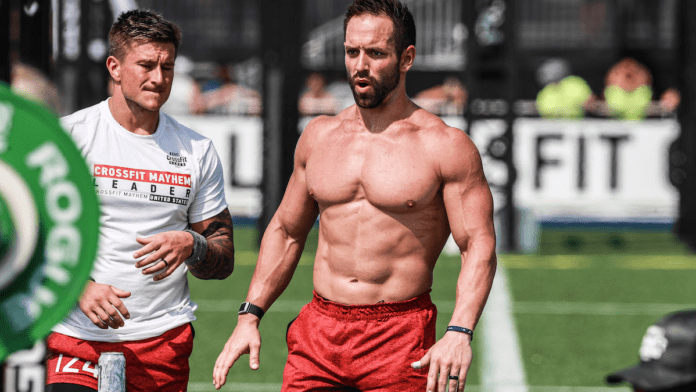Is it chest day again? Check out these 9 perfect exercises for a more attractive lower chest.
Working on your lower chest is essential for achieving a well-rounded and balanced physique. Targeting the lower chest muscles helps create definition and shape in the lower pectoral region, giving your chest a fuller and more sculpted appearance. Neglecting this area can result in an imbalanced chest development, leaving the upper chest dominant while the lower part lacks definition.
Additionally, focusing on the lower chest muscles enhances overall strength and functionality in daily activities and athletic performance. Strengthening the lower chest aids in improving pushing movements, such as bench press variations and push-ups, which are fundamental exercises for upper body strength and development. Incorporating exercises that specifically engage the lower chest ensures a comprehensive and symmetrical chest development for a well-proportioned physique and optimal functional strength.
So what are the 9 perfect exercises for a more attractive lower chest and who came up with it? His name is Max Posternak. Max Posternak is the founder ofGravity Transformation, a website focused on giving tips and training guidance for people looking to improve their fitness and lose weight. HisYouTube channelhas over 5.5 million subscribers.
For the list of exercises, keep scrolling down.
How To Reduce Chest Fat
9 Perfect Exercises for a More Attractive Lower Chest
The chest, primarily composed of the pectoralis major, is a large exterior muscle covering the front part of the top six ribs. It extends from the sternum, collar bone, ribs, and external obliques, all the way to the upper arm, and is positioned atop the smaller pectoralis minor. The pectoralis major can be divided into two heads, the upper and lower portions, with muscle fibres running in different directions: some at an upward angle, often referred to as the upper chest, others straight across, known as the mid-chest, and finally, some at a lower angle, called the lower chest.
For those seeking to target and develop the lower chest, there are 9 highly effective exercises to incorporate into their workout routine. While the decline bench press is commonly recommended, it may not provide the ideal range of motion and can shift tension away from the upper chest, directing it towards the triceps and lats.
A superior alternative for targeting the lower chest is the flat bench press, a potent compound movement that engages the entire chest, including the lower part. Studies even suggest that focusing on progressively increasing the weight lifted during the flat bench press alone can lead to significant chest development, encompassing the lower fibres as well.
How to Increase Your Metabolism
The decline bench press can still be utilized as a secondary exercise later in the workout routine, ensuring focused attention on the lower chest area. With feet off the floor, the barbell is lowered slightly below the nipple line for optimal targeting. In addition to bench presses, incorporating isolation movements like the pec deck fly can uniquely isolate the chest muscles. Unlike regular dumbbell flies, the pec deck fly minimizes the involvement of the biceps and forearms, directing pressure through the elbows for a focused chest workout. Studies sponsored by the American Council on Exercise have shown that the chest activation achieved through the pec deck fly machine is comparable to that of the flat bench press.
Compound exercises such as the chest dip, performed on parallel bars, also contribute to targeting the lower chest while strengthening the triceps and bench press capabilities. The bent forward high cable crossover allows for focused tension on the chest, particularly the lower portion when performed with the cables meeting under the chest.
How to Increase Chest Size and Strength
The decline cable chest press offers another cable-based option to engage the lower chest effectively. Unlike dumbbells or barbells, the cable resistance provides a different tension angle, creating a sensation similar to a fly combined with a press. Maintaining a slight bend in the elbows throughout the exercise ensures effective muscle engagement while avoiding unnecessary strain on the elbow joint.
Dumbbell presses, whether at a flat or decline angle, can further develop the lower chest, although the decline angle may require assistance in lifting the dumbbells onto the lap.
The second excellent dumbbell exercise is the dumbbell fly, which you should perform on a decline angle. While some individuals may shy away from dumbbell flies due to concerns about shoulder injury, it is important to note that if these exercises do not cause discomfort in your shoulders, they can be a valuable addition to your workout routine.
To perform the dumbbell fly safely and effectively, it is crucial not to lower the dumbbells too far down. Lower them only until they are about parallel with your chest before returning to the starting position. By adhering to this range of motion, you can minimize the risk of shoulder strain and maximize the benefits of this exercise for your chest development.
The Only 8 Bodyweight Exercises You Need to Build Muscle Fast
Incline push-ups can be performed on a TRX suspension trainer for a heightened challenge or reserved for burnout sets towards the end of the workout. Alternatively, these push-ups can be superset with another weighted chest exercise, maximizing muscle engagement.
10 Push-Up Variations to Build Strength, Power and Muscle
By incorporating these nine exercises into a well-structured chest workout routine, individuals can effectively target and develop their lower chest outline. Starting with the flat bench or flat dumbbell press while maintaining a progressive approach to increasing weight is vital for overall chest development.
>Selecting four to five exercises from the list and performing them as the second chest workout during the week can further accelerate progress. Embracing two weekly chest workouts, based on research findings, can enhance results and support the goal of building a well-defined and aesthetically pleasing lower chest.
In a nutshell, these are the 9 perfect exercises for a more attractive lower chest that Max Posternak came up with:
- Flat bench press
- Decline bench press
- Peck deck fly
- Chest dips
- Bent-forward high cable crossover
- Decline cable chest press
- Dumbbell press
- Dumbbell fly
- Incline push-ups (TRX or burnouts)
See the video below to understand how to perform each and every single one of these exercises.
How to Get a Muscular and Chiseled Lower Chest
5 Steps to Build a Perfect Male Physique
Having a strong chest is important for athletes and overall health for several reasons:
- Athletic Performance: A strong chest is crucial for athletes as it contributes to their overall upper body strength and power. In sports that involve throwing, pushing, or lifting, such as football, basketball, wrestling, and weightlifting, a strong chest plays a significant role in generating force and improving performance.
- Upper Body Stability: A strong chest provides stability to the upper body and helps athletes maintain proper form during various movements and exercises. This stability is essential for preventing injuries and optimizing performance in sports and other physical activities.
- Functional Strength: A strong chest enhances functional strength, allowing individuals to perform everyday activities with ease. Whether its carrying groceries, lifting objects, or performing household tasks, a robust chest contributes to overall functional fitness.
- Posture and Alignment: A well-developed chest helps to maintain good posture and proper alignment of the shoulders, spine, and neck. This can prevent common issues such as rounded shoulders and forward head posture, reducing the risk of musculoskeletal problems and discomfort.
- Breathing Efficiency: The muscles in the chest, along with the diaphragm, are responsible for breathing. A strong chest aids in respiratory function, allowing for efficient oxygen intake during physical activities and promoting better endurance.
- Bone Health: Resistance training, which includes chest exercises, helps to maintain bone density and strength. This can be particularly beneficial for athletes, as it reduces the risk of stress fractures and other bone-related injuries.
- Metabolic Benefits: Building and maintaining muscle mass, including the chest muscles, can increase metabolism and aid in weight management and body composition goals.
- Cardiovascular Health: Engaging in chest exercises, such as bench presses and push-ups, can elevate heart rate and provide cardiovascular benefits, improving overall heart health.
- Psychological Well-being: Physical fitness, including a strong chest, is linked to improved mental health and overall well-being. Regular exercise can reduce stress, anxiety, and depression, promoting a positive mindset and improved quality of life.
In conclusion, having a strong chest is vital for athletes to excel in their respective sports, maintain proper posture and alignment, enhance functional strength, and reduce the risk of injuries. Moreover, a robust chest contributes to overall health by promoting cardiovascular fitness, bone health, and psychological well-being. Engaging in regular chest exercises, alongside a balanced workout routine, can lead to numerous physical and mental benefits for individuals of all fitness levels.
How to Build Lower Chest Correctly
5 Testosterone-Boosting Foods Men Must Eat
How to Build a Bigger Chest at Home in 30 Days
8 Reasons Your Abs Arent Showing and How to Fix It
The Best Science-Based Chest Workout for Mass and Symmetry
#Perfect #Exercises #Attractive #Chest #BOXROX
Image Source : www.boxrox.com

